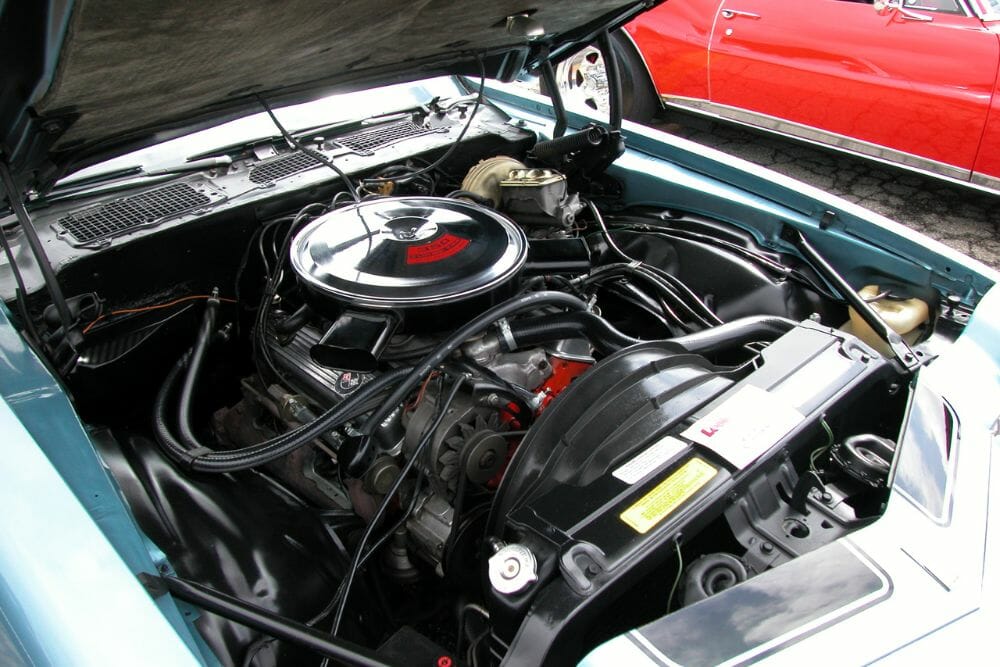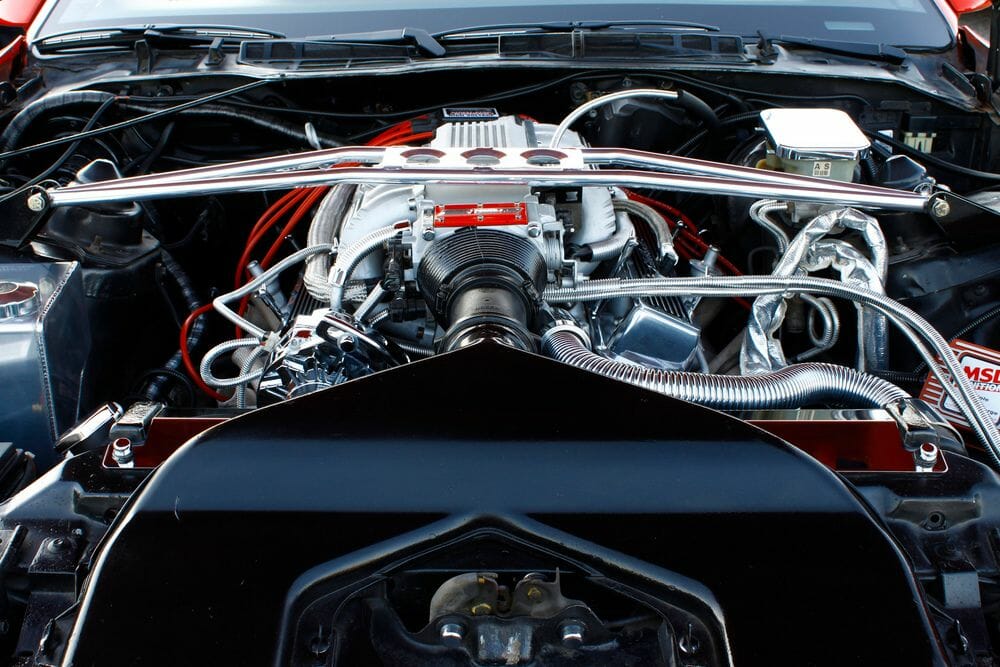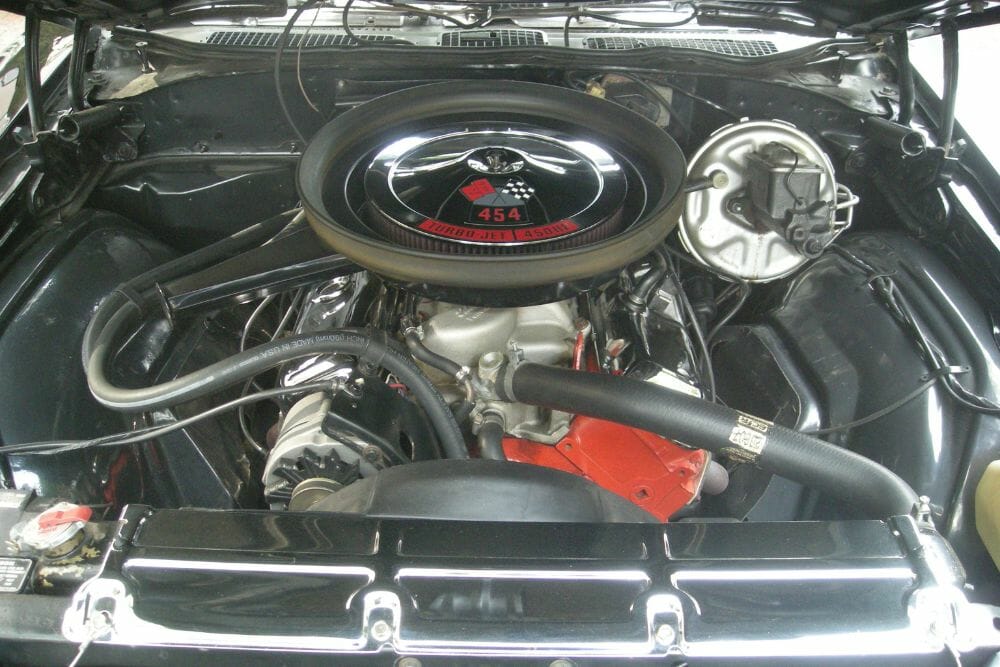Matija Pinko
Updated on June 21, 2023
Understanding the firing order of your Chevy engine is key to keeping it running properly. Firing orders are specific to each engine, so if yours has been replaced or rebuilt, it’s important to make sure you have the correct information.
Spark plug ignition for the Chevy 350 Small Block V8 engine utilizes a clockwise rotation and an order of 1-8-4-3-6-5-7-2. For the 5.3L V8, you should use a similar setup with the firing order being 1 – 8 – 7 – 2 – 6 – 5 – 4 – 3 in a clockwise direction. As for the Chevy 5.7 engine, it follows suit with its own combination of spark plug ignition and clockwise movement, specifically using: 1–8–4–3–6-5-7-2.
Let’s discuss the Chevy Firing order for 350, 5.3, and 5.7 engines (small block & V8 big block).
Fire Order for the Chevy 5.3 L V8 Engine

The Chevy 5.3L V8 is one of the most popular engines on the market today, and the firing order plays an important role in its performance. The firing order is the sequence in which each cylinder receives its spark plug ignition signal. In other words, it dictates when each cylinder fires so that power can be delivered to your vehicle in a smooth and efficient manner.
The firing order for the Chevy 5.3 is 1,8,7,2,6,5,4,3. While the start is similar to the Chevy 350, it’s important that you don’t confuse them. To ensure that the engine runs properly, it’s essential to use the correct firing order.
The way in which the spark plugs fire is also important. The sequence of 1-8-7-2-6-5-4-3 indicates a clockwise rotation, meaning that each spark plug fires in a clockwise direction. This helps ensure that power is delivered evenly throughout the engine and prevents any potential misfires or stalling.
It’s also important to remember that all of the spark plugs must be replaced with new ones at regular intervals as part of routine maintenance. Otherwise, you could risk poor fuel efficiency and poor performance from your engine due to a lack of proper ignition.
| Image | Title | Price | Buy |
|---|---|---|---|
Top Top Top | JDMSPEED New Performance Spark Plug Wire Set 10.5mm Replacement For Chevy GM LT1 LT4 5.7L 4.3L 1992-1997 | Buy Now | |
 Top Top | 10.5 MM High Performance Spark Plug Wire Set for HEI SBC BBC 350 383 454 Electronic (9Pcs) | Buy Now | |
 Top Top | 64602 High Energy 8mm Spark Plug Wires Set Replacement for Chevy/GM 1974-1988 305 350 400 SBC Engine 90° Boot Spark Plug Wire (9-Pack) | Buy Now |
Prices pulled from the Amazon Product Advertising API on:
The Firing Order for a Chevy 350

The Chevy 350 is part of the beloved Chevrolet small-block engine family and earns its nickname “SBC” for being notably more compact than big-block crate engines (262 to 400 cubic inches as opposed to 348 to 572 cubic inches).
The firing sequence of the Chevy V8, both SBC and BBC variants, is uniform: 1-8-4-3-6-5-7-2. Starting with cylinder number one, each subsequent engine successively ignites until every cylinder has had its turn.
The Chevy 350 firing order can be easily identified by counting from left to right or from front to back. Looking at your distributor cap, each valve in the center will have a corresponding cylinder number (1-8) labeled on the edges. The inner circle indicates the spark plug for that cylinder and its respective location. Starting with 1-8-4-3… all the way to 7-2 should help you identify the correct firing order for your Chevy V8 engine.
It’s important to note that interfering with an engine’s timing can dramatically change its performance, so always double-check your work!
The firing order is a key item to remember when working on an engine or replacing spark plugs or other components that affect the timing. It’s always best to double-check your work and make sure you have it right before making any modifications that could change the firing order. If you ever find yourself in a bind, plenty of diagrams and specs are available online for cross-referencing your Chevy 350 engine specifications.
Firing Order for the Chevy 5.7 Engine

The Chevrolet 5.7-liter engine is a common model used in many legendary vehicles, such as the Camaro and Silverado. The firing order for this engine is 1-8-4-3-6-5-7-2, with cylinder number one being the closest to the front of the vehicle on the driver’s side. While it may look confusing at first glance, this firing order allows for an even power balance throughout all cylinders and keeps emissions low.
Still, it’s a Chevy engine, and Chevy engines are logical. If you can remember the firing order, you should have no problems installing your spark plugs.
The first step is to find cylinder number one and make sure it lines up with the firing order. Cylinder number one is located on the driver’s side, closest to the front of the vehicle. From there, work your way around in a clockwise motion following the firing order 1-8-4-3-6-5-7-2.
What’s a Firing Order?
Firing order is the sequence in which a vehicle’s cylinders fire during its operating cycle. It describes the timing of each cylinder’s ignition and combustion, allowing for the proper operation of an engine’s systems. A tightly regulated firing order is necessary for the correct functioning of an engine, so understanding what it is and how to adjust it can be beneficial in ensuring that your vehicle works properly.
The firing order refers to how quickly each spark plug fires within a given engine and the order in which they do so. This information is typically printed on or near the engine block but may require some searching in certain instances. Generally speaking, small V-type engines have their cylinders numbered 1 through 4 (or the number of cylinders the car has) from front to back, similar to a V-shaped diagram.
When working with an engine, two main types of firing orders are used: even and odd. With an even firing order, the spark plugs are fired in pairs in an alternating pattern; for example, cylinders 1 & 2, then 3 & 4. The odd firing order alternates between cylinders that aren’t adjacent; for example, cylinders 1 & 3, then 2 & 4. This type of setup is often used when the engine is turbocharged or supercharged, as it can help balance out the pressure generated by each combustion cycle and reduce vibration.
The timing of each spark plug firing is also important as it affects the engine’s overall performance. The timing of each spark plug firing should be set so that each cylinder receives its fuel-air mixture at the same time. Otherwise, uneven combustion can occur and cause engine misfires or other problems.
Adjusting a firing order is typically done by adjusting the distributor cap or camshaft position sensor (CPS). Depending on your make and model, there may be other variables to consider when making these adjustments, such as camshaft timing gears, pushrods, intake, and exhaust valves, etc.
Keep in mind that different engines may have different firing orders depending on their purpose and design features. If you are unsure of your engine’s exact timing order, consult a service manual or take your car to a reputable repair shop for assistance.
As always, following the manufacturer’s guidelines is essential when making changes, such as adjusting the firing order. Doing otherwise can lead to costly repairs or even damage to the engine itself. Take care of your car, and it will be sure to stay running smoothly for years to come!
What Happens If You Mix Up the Firing Order?
When the firing order of an engine is changed or mixed up, there are significant effects on how the engine runs. The most noticeable problem that occurs when this happens is misfiring and poor performance.
The firing order is designed to ensure that each cylinder in an engine receives fuel and air at the right time, enabling it to receive a spark and ignite it properly. When the firing order is incorrect, one or more cylinders will not get their necessary fuel/air mixture at the right time when they should receive a spark. As a result, the cylinder will not fire correctly, resulting in misfires and decreased power output from your vehicle.
Additionally, incorrect sequencing of cylinders can create uneven stress distributions within the engine’s crankshaft and connecting rods. This increase in stress can cause premature wear and other damage to the engine, such as bending and breaking of internal components.
Suppose you suspect that your vehicle’s firing order is incorrect. In that case, it is important to diagnose the issue by tracing each cylinder’s spark plug wire back to its respective ignition coil or distributor. Once the misfiring cylinders are identified, you will need to remove them and reassemble them in their proper sequence according to the manufacturer’s specifications.
Finally, it is important to always use genuine replacement parts when performing repairs on an engine with incorrect firing orders. Using aftermarket components can lead to further issues down the line, so it is best to pay the extra cost for quality parts when replacing spark plugs, wires, or any other components affected by incorrect firing orders.
In summary, if you suspect that your engine’s firing order has been mixed up, it is important to diagnose and fix the issue as soon as possible. Ignoring such a problem can lead to misfiring and poor performance, as well as cause damage to internal components due to increased stress.
Replacing faulty components with genuine parts will help reduce the risk of further complications in the future. With proper care and maintenance, you can ensure that your vehicle’s firing order is correct and running smoothly.
What’s a Chevy Small Block?

The Chevy small block is one of the most iconic engines in automotive history. In 1955, Chevrolet manufactured the first generation of small blocks with a 265 cubic inch V8 engine. This powerful motor was featured in both the Corvette and Bel Air models, quickly becoming beloved amongst stock car racers who fondly dubbed it “Mighty Mouse.
The following year saw an increase to 283 cubic inches – plus Rochester mechanical fuel injection as an optional upgrade! With this configuration producing one horsepower for every single cubic inch, it’s no surprise that these engines became renowned for their power and reliability.
Over its 60-plus year production run, it has been built in many different displacements and configurations ranging from 140 to 626 cubic inches, with outputs ranging from 115 horsepower all the way up to 620 horsepower. The Chevy Small Block is a mainstay in American hot rod culture, having been used in GM vehicles and countless aftermarket projects.
When considering a Small Block Chevrolet engine build, there are several things to consider: what type of power you want, what components you need, and the intended use for your vehicle. Whether you’re looking for a mild street engine, a full-on race motor or something in between, the Small Block Chevy is capable of achieving your goals. And with so many aftermarket parts available, you have endless possibilities when it comes to building your ideal engine.
The 5.7 Liter 350 cubic inch series of the Chevrolet small-block is by far the most popular and recognizable to date! This incredible engine was installed in station wagons, sports cars, commercial vehicles, boats – even airplanes! It’s been used for decades before its discontinuation in 2003; however, GM Powertrain still manufactures it as an industrial and marine Vortec engine today through their “GM Genuine Parts” brand at a subsidiary located in Springfield, MO.
For those looking to build a more powerful engine, there are several options available from GM, such as the 6.2L L92/LS3 or 7.4L LSX454 crate engines that can be used in hot rods or muscle cars with ease. Aftermarket versions of these engines are also available, which offer more power and features than the factory versions.
Additionally, high-performance stroker kits allow you to increase displacement while retaining OEM components; this is an ideal option when you want big power but don’t want the expense of buying a larger engine.
Whether you’re a drag racer, vintage car enthusiast, or just looking for more power from your daily driver, the Chevrolet small block engine is a great choice.
What’s a Chevy Big Block?

The Chevy Big Block is an engine platform used in many of Chevrolet’s higher-performance vehicles. It was introduced in the late 1950s and produced until the early 2000s. It is known for its big size, its power, and its ability to be modified for increased performance.
The Big Block was introduced to fill a gap in Chevy’s engine line-up between the small-block V8 and the massive W-Series engines. The initial design featured a cylinder block of 454 cubic inches with a bore and stroke of 4.25×4.36 inches. This basic design has been modified over the years but still continues in production today, with displacements ranging from 427 to 572 ci (7 to 9 liters).
The Big Block platform is incredibly versatile and has been used in many different applications over the years, including trucks, boats, drag cars, and pro-street muscle cars. Additionally, many performance parts are available to increase power output substantially due to their large displacement and robustness. This includes crankshafts, headers, camshafts, exhaust systems, cylinder heads, and more.
The Chevy Big Block is an iconic engine platform that has been in production for over 50 years. It is a great choice for anyone looking for big power and performance out of their vehicle. With its wide range of displacements and availability of aftermarket parts, it can be tailored to any application or budget. Whether you’re restoring a classic car or building the ultimate dragster, the Big Block will get the job done!
No matter what you’re looking for, the Chevy Big Block is one of the most reliable and versatile engines available. It has been used in countless applications over the years and is popular today. For those looking for a powerful engine with plenty of potential, look no further than Chevy’s legendary Big Block!
Conclusion
The Chevy firing order for 350, 5.3, and 5.7 engines (small block and V8 big block) is an important part of engine maintenance and performance tuning. Knowing the correct firing order helps ensure that your engine runs properly and efficiently while also helping to reduce emissions and prevent misfires or stalling.
For the Chevy 350 Small Block V8 engine, the firing order is 1-8-4-3-6-5-7-2, with a clockwise rotation being used for spark plug ignition. The firing order for the Chevy 5.3L V8 is 1-8-7-2-6-5-4-3 in a clockwise rotation. Lastly, for the Chevy 5.7 engine, the firing order is 1-8-4-3-6-5-7-2 with a clockwise rotation for spark plug ignition.
By following these steps and double-checking your work before making changes, you can ensure that your Chevy engine runs smoothly and efficiently!
If you need additional help or more information, many diagrams are available online to cross-reference your Chevy 350 engine specifications and ensure everything is correct. With this information, it should be easy to maintain optimal performance from your engine.
Here are some articles that you might enjoy:
Ford Firing Order For: 5.4, 302, 4.6, 390, 5.0, 351
10 Best HEI Distributors For a 350 Chevy